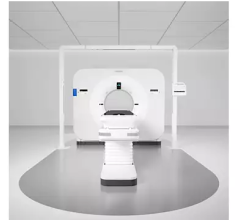July 29, 2008 - Lung cancer presents a special challenge to clinicians attempting to evaluate the effectiveness of radiation treatment and determine the total dose of radiation received by the tumor and surrounding tissues.
The reason is simple: lung tumors change position as an individual breathes during medical scans. This unavoidable movement of the lungs makes it difficult to accurately assess tumor volume (particularly in the very small malignant nodules that are more treatable if detected early) and track any changes in size that may have resulted from treatment.
Issam M. El Naqa, an assistant professor of radiation oncology at Washington University in St. Louis, and his colleagues have devised a novel solution. Their semi-automated system combines two types of computer algorithms previously only used separately to process data from computerized tomography (CT) scans of the lungs.
So-called deformable regression algorithms are used to create a consistent set of coordinates on which tumor position and size can be mapped over the course of treatment, and segmentation algorithms allow tumors to be precisely located and distinguished from other lung tissue (or "segmented") in CT images. El Naqa and his colleagues, realizing that "both approaches could significantly benefit from the results of the other algorithm if coupled in the same framework," created a new program that does just that.
El Naqa, who has tested the combination algorithm in a preliminary study of four people with non-small cell lung cancer, says that the method provides more accurate and consistent results for tracking tumor changes. He says the technique "would allow us to learn more about tumor response to treatment and potentially be used in treatment adaptation," or, perhaps, in the pre-planning of treatment strategies that would reduce the overall levels of toxic radiation received by people undergoing radiotherapy for lung cancer.
For more information: www.aapm.org
Source: American Association of Physicists in Medicine


 December 11, 2025
December 11, 2025 









